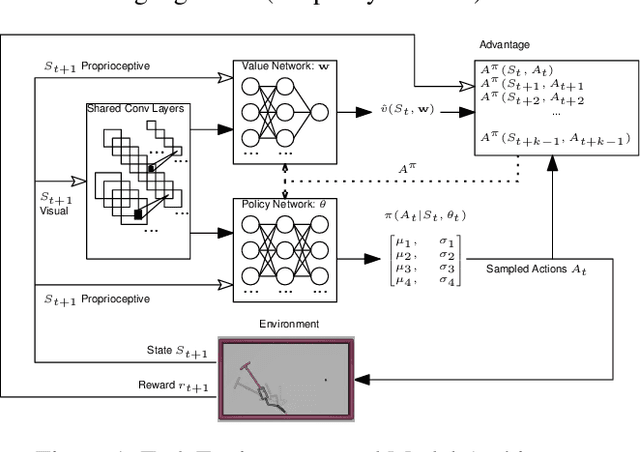Emergence of Different Modes of Tool Use in a Reaching and Dragging Task
Paper and Code
Dec 08, 2020



Tool use is an important milestone in the evolution of intelligence. In this paper, we investigate different modes of tool use that emerge in a reaching and dragging task. In this task, a jointed arm with a gripper must grab a tool (T, I, or L-shaped) and drag an object down to the target location (the bottom of the arena). The simulated environment had real physics such as gravity and friction. We trained a deep-reinforcement learning based controller (with raw visual and proprioceptive input) with minimal reward shaping information to tackle this task. We observed the emergence of a wide range of unexpected behaviors, not directly encoded in the motor primitives or reward functions. Examples include hitting the object to the target location, correcting error of initial contact, throwing the tool toward the object, as well as normal expected behavior such as wide sweep. Also, we further analyzed these behaviors based on the type of tool and the initial position of the target object. Our results show a rich repertoire of behaviors, beyond the basic built-in mechanisms of the deep reinforcement learning method we used.
 Add to Chrome
Add to Chrome Add to Firefox
Add to Firefox Add to Edge
Add to Edge